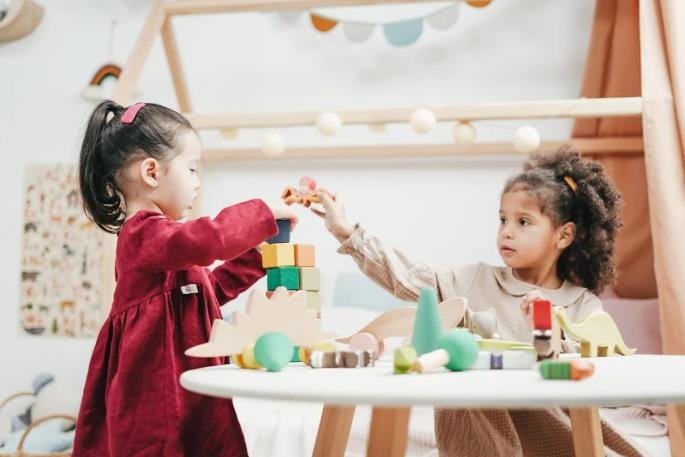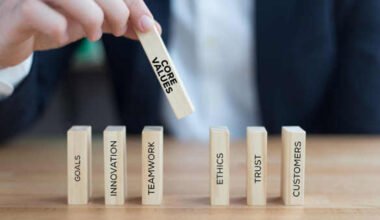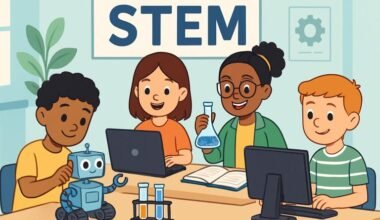Many parents today wonder if preschool still matters as much as it once did. With so many learning apps and videos available at home, sending children to a formal classroom may seem less urgent. But studies show that’s not the case. According to research, kids who attend high-quality preschool programs are more likely to start kindergarten ready to learn. That’s not just about knowing letters and numbers. It’s about building skills that help children grow into confident learners.
The real challenge isn’t just getting kids into preschool. It’s making sure those early years are spent in a way that really helps them develop. Education experts agree that preschool methods are evolving. Teachers and schools are using new ideas and tools to help children learn better. From how classrooms are set up to how children’s feelings are handled, things are not the same as they were a few years ago.
This article takes a close look at some major trends that are shaping the future of preschool education. Each one shows how early learning is moving beyond just teaching kids their ABCs.
Teachers Trained in Child Development Science
Preschools today prefer hiring teachers with deeper knowledge of how children grow and learn. Many of these professionals pursue advanced education, such as a Master’s in Child Development offered by institutes like Southeastern Oklahoma State University. This fully online program focuses on training professionals to support children from birth to age eight in settings like preschools, hospitals, and social service agencies.
Southeastern’s program emphasizes evidence-based teaching methods and early detection of developmental delays. This kind of training helps them handle a wide range of learning needs and behaviors, including both typical and atypical development.
Teachers with this background know how to spot early signs of challenges that could affect learning or social skills. They also bring research-based methods into the classroom.
Play-Based Learning Is Taking Center Stage
In many modern preschools, worksheets and strict lessons are being replaced with structured playtime. The reason is simple: play is how young children learn best. Through activities like building with blocks, pretend shopping, or sorting colors, kids pick up key skills without feeling pressure.
Teachers guide these play sessions with clear goals in mind. For example, while children build towers, they’re learning about balance, size, and problem-solving. This method makes learning feel fun and natural rather than forced.
Focus on Emotional Intelligence Early On
Preschool is no longer just about letters and numbers. Schools now pay more attention to helping children understand and manage their emotions. This shift is important because strong emotional skills support better learning and social behavior.
In practice, this looks like adding regular activities that teach kids how to talk about their feelings. Teachers might start the day with a group chat where kids say how they feel. Some classrooms use calm-down spaces with books or soft toys where kids can take a break if they’re upset.
These methods help children learn empathy and self-control from a young age. It also means fewer behavior issues in class. By focusing on emotional intelligence early, schools help kids build skills that will last long after preschool.
Inclusive Classrooms for All Abilities
Preschools today are working harder to create classrooms where all children feel welcome, including those with special learning or physical needs.
Teachers in these settings receive extra training to help them support a wide range of abilities. For example, a child who needs speech therapy might join the same play sessions as everyone else, with a little extra help. This setup helps all kids learn acceptance and patience while making sure no one feels left out.
Inclusive classrooms also benefit families by providing a consistent learning environment for all children. The focus is on helping everyone succeed together rather than dividing students by ability level.
Nature-Based Learning Environments
More preschools are moving away from the idea that all learning has to happen indoors. Nature-based learning is gaining popularity, with schools setting up outdoor classrooms, gardens, and even forest school programs.
Children might spend part of their day exploring plants, looking at bugs, or watching the weather change. These experiences help develop curiosity, problem-solving skills, and a basic understanding of science.
More Parent Involvement Through Digital Tools
Preschool programs now use digital tools to keep parents involved in what their children do during the school day. Many schools have apps that let teachers share updates, pictures, and notes. This helps parents know what their child is learning without waiting for weekly reports or scheduled meetings.
Teachers can upload small videos of class activities or quick notes about progress. For parents, this means being able to talk with their child about specific things they did at school. It also helps families follow up on learning at home.
Preschool education is changing in real and important ways. The old model of sitting at a desk with worksheets is giving way to learning through play, outdoor exploration, personalized support, and emotional growth strategies. Schools now work closely with parents through digital tools. Teachers have stronger training. Programs include more than just reading and counting—they focus on the whole child.
For parents and educators, understanding these trends helps make better choices for young children. Preschool today is about more than preparing for kindergarten. It’s about setting kids up with the skills and confidence they need to do well in all parts of life.



